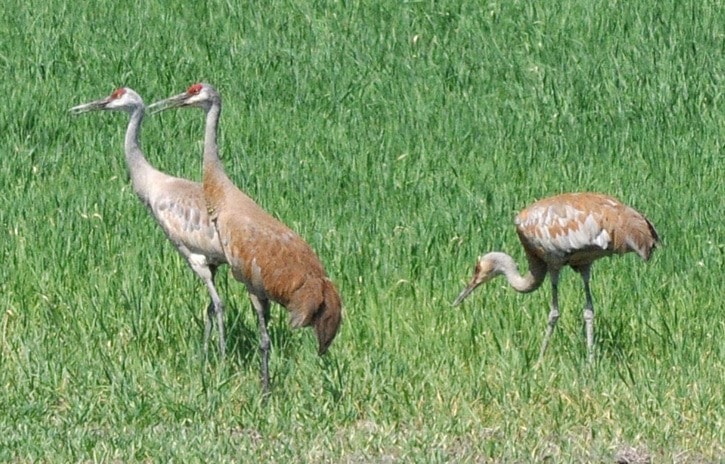The world out there is getting well into autumn. Just a few more frosty nights will sweeten up those apples still hanging from the trees. Juncos are already appearing more commonly in the backyard, while Steller’s jays and blue jays are lurking around backyards and country roadsides seeking out tasty filbert and hazel nuts. The once bright yellow flowers of golden glove stands are bent down, displaying brown, bedraggled petals. Plant capsules are full of seeds, assuring plants for the next growing opportunity.
Of all the changes this time of year, bird migration gets the greater share of attention from us onlookers. (Some of us would like to participate.) It means birds are moving about, some of them long distances and some just down the mountain. Birds leave and birds come. Is our loss some other bird watcher’s gain? But we cannot deny that we have more birds in winter than some other areas like Saskatchewan, which I am told can have a total of eight wintering bird species.
One of autumn’s gifts to this Kootenay valley is a small number of sandhill cranes. (A very small number are reported to nest here.) It was some years before I realized and observed with my own eyes that sandhill cranes frequented here in the spring and autumn. A large bird comes sailing over the dike. “Hey, that wasn’t a heron! That dark bird with outstretched neck and legs and a red cap was a sandhill crane.” My glimpses of sandhill cranes have been rather few, but each siting has always been a nice surprise.
When I see sandhill cranes, it makes me think I am on the prairie, although that isn’t their only stomping ground. But, then we have a “prairie” right here, on the Kootenay River flats. It is like a “great divide” lying between the Selkirk Mountains to the west and the Purcells to the east. The cranes, like many other birds, make it through those eastern mountains by following valley flyways where there are occasional fields and wet areas to rest and feed.
A couple of days ago, we watched two cranes as they foraged in a field on the flats. According to books, northern sandhill cranes, for food, seek out frogs, insects, small mammals and other small critters found in and out of the water. But like robins, who will divert from their diet of worms and eat berries in winter, sandhill cranes, in winter, have been observed feeding on spilled grain. The two in the field could have been feeding on grain roots as one had small, white clumps of something sticking to the bill. Southern populations of cranes tend to be herbivores. In fall, winter and spring, sandhill cranes frequent open prairie, fields and marshes; however, they choose remote swamps, bogs and marshes for nesting.
You probably won’t spot a crane in town. That bird you saw was probably a heron, beating its way to someone’s pond. But you may spot sandhill cranes on the Kootenay River flats. Take a morning drive along fieldside roads and see if one of those large birds is looking back at you. Take binoculars, but, while you are driving, keep your eyes on the road!
Ed McMackin is a biologist by profession but a naturalist and hiker by nature. He can be reached at 250-866-5747.
